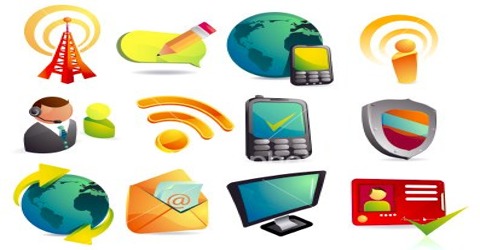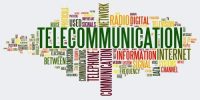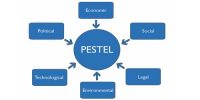Various Media of Electronic Communication
Now a day, communication is treated as the life-blood of all economic and social activities. The success of communication depends on rapid and accurate transmission. Electronic devices facilitate in transmitting information rapidly and accurately. People can communicate electronically by using different oral and written media. The popular media of electronic communication are discussed below:
E-mail: E-mail is the short form of electronic mail. It is a communication from one computer to another via internet. When one computer is connected with the internet, the user can send a message to a receiver whose computer is also connected with the interne. In e-mail, both the sender and the receiver must have specific e-mail addresses like [email protected]. Non-business users normally use various portals like yahoo, hotmail, mail.com, g-mail etc. to open e-mail address. When the computer receives a new message, it is automatically stored in the mail box and the user can check the mails at his/het convenient time.
Voice-mail: Voice mail is another developed medium of electronic communication. It is similar to e-mail with the difference that voice-mail is an oral medium of electronic communication whereas; e-mail is a written medium of electronic communication. Here oral message is sent to the receiver. It requires a computer, a voice recorder and telephone connection to transmit and store the oral message in digital form. It is a very useful means of transmitting short oral message to someone who is not immediately available.
Telex: Telex is a traditionally used written medium of electronic communication. In telex, information is sent quickly with the help of teleprinter. The teleprinter has two parts: (i) keyboard transmitter and (ii) receiver. When the sender types the message, it is automatically printed on the scrip at the receiver’s end. Telex functions like telephone with the difference that here contact is made by telewriting rather than speech. Message is sent through telex to anyone who also has a similar machine.
Fax: Fax stands for Fractional Airspace Xerox. Fax is one of the most popular and widely used means of modern communication. It is also commonly termed as facsimile. Message can be transmitted through fax almost instantly. Facsimile machine sends a scan copy of the message over telephone from one place to another. Identical copy of printed documents including pictures, photographs, charts, and graphics can easily be transmitted through fax to anyone who also has a similar machine.
Teleconferencing: Teleconferencing is a group meeting or group discussion of people who are in different geographic locations. It is a method of face-to-face communication using electronic devices. Teleconferencing may be of the following two types;
- Audio conferencing: Audio teleconference is a type of conference in which distant participants exchange their oral messages. Here the participants can only hear the voice.
- Video conferencing: In video teleconference, the participants can hear and see each other. Each individual taking part in video conferencing has to enter into a separate television audio equipped with video camera, microphone, and monitor. This kind of communication is very expensive.
Bulletin Board: Bulletin board is an online notice board. Different groups or organizations creates bulletin hoard on the internet to display notices and circulars of various events. Any member of the group or organization can get the message from the bulletin board at any time if his computer is connected with Internet.
Intermit: Internet is a revolutionary invention in the field of information and communication technology. It has dramatically changed the pace of communication globally. Internet may be defined as the network of networks or accumulation of smaller networks that are connected through telephone lines, satellite or radio links. It links thousands of similar computer networks end millions of individual computer users worldwide. It is accessible to individuals, organizations, educational institutions and government agencies.
















